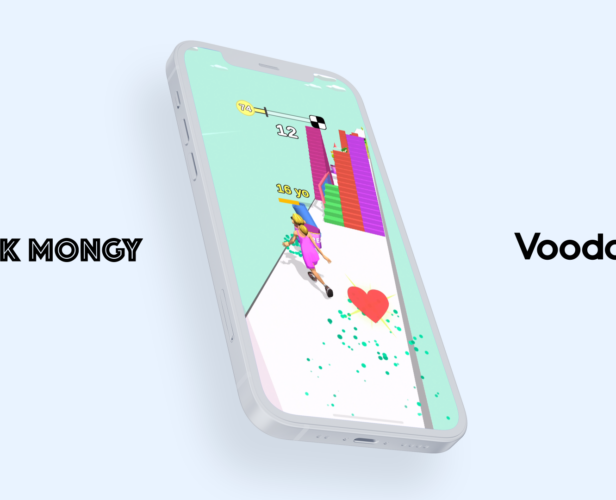Category
Strategies
#Game Design
Splitting Point: how Field Trip Z got 45M players on Roblox this year
We recently spoke with Janzen Madsen, founder at Splitting Point Studios, to get his perspective on how to develop a hit on Roblox. Splitting Point has created multiple experiences, including Field Trip Z which this year alone saw more than 45M unique players. Janzen is intimately familiar with what makes a Roblox experience a success. Roblox is an absolutely massive platform, with over 32 million experiences and 52 million active users. But making a game there is unlike making a game anywhere else. It’s much faster paced, the audience is much younger, and it’s much more tricky to design. The typical principles you might expect are quite different. 1. Don’t make it like a mobile game “Often, developers coming from the mobile gaming industry will assume that they can replicate their success by rebuilding their games on Roblox. This just...
#Game Design
Fruit Ninja dev talks porting to VR
Obsessed with making games that people will remember for a lifetime, Halfbrick decided to convert their hit title, Fruit Ninja, into a VR game. It was a natural evolution – people apparently really enjoy slicing fruit and swinging swords. After that success, they created Fruit Ninja VR 2 – adding more features and exploration to the game. “Making a game for VR is very, very different,” said Liam Potter, one of the lead gameplay programmers on Fruit Ninja VR 2. “There are a lot of things you need to take into account that you just don’t for console or mobile.” With that in mind, let’s dive into those challenges and see what Liam advises. Show players the play space early In a VR experience, it’s incredibly difficult to make sure that players are looking where you want. Gamers notoriously fail...
#Marketing & Publishing
Hyper-casual bible: top resources for making a hit game
Building hyper-casual games is a great way to get into game development. With their short cycles and simple gameplay, crafting a hyper-casual title means you can learn important skills across game design and monetisation, which you’ll need for success in the mobile games industry. But how do you get started building a hyper-casual game? What exactly goes into creating a hit in this genre? What KPIs should you track and what results should you be aiming for? There’s a lot you should know before getting started. So before you get tapping away and developing your next hit, make sure to read through these resources to master everything ‘hyper’. 1. Understanding hyper-casual The hyper-casual genre is a unique one. It’s made up of short, satisfying, and simple gameplay, basic artwork, and relies heavily on ads to make money. So to kick...
#Game Design
Reaching a +40M playerbase: advice from Trihex Studios
Unless you’ve been living under a rock for the last few years, you’ve probably heard of Roblox. It’s a gaming platform with over 30 million games – which they call experiences – 52 million daily active users (DAU) and 12 million creators at the time of writing. One of the keys to its success is that it makes it exceptionally easy to create and release games on its platform. We spoke with Tae Kim and Eric Park, co-founders of Trihex Studios and the minds behind Redcliff City – one of the most popular titles on Roblox which has, this year alone, amassed a community of more than 40 million unique players. During our conversation, we asked them what mobile developers could learn from Roblox and how they could make the move over to the platform. Here’s their advice. First up,...
#Ads & Monetization
Navigating Web3: What does it mean for Game Developers?
If you read tech news, you’ve probably stumbled on the term Web3. And you might be wondering what it means and how it could affect gaming. So let’s explore Web3 and the surrounding opinions. What is Web3? It’s all about ownership. The web has been going through gradual changes, ever since it launched. Web1 was where people uploaded websites with static pages and information. You simply read Web1. The next step was Web2, where users create their own content. Web3 is a prediction that users will begin to own digital content and have control over how they use it. But it’s also about decentralizing that ownership: making sure it’s not tied to any particular platform. (You don’t just own a movie on one platform, you own the right to watch it anywhere, for example.) “I was lucky enough to be...
#Data & Analytics
Top visualizations for game telemetry data
Imagine this. You come into work, load up your dashboard, and you’ve got a map of the world – each country a different colour. The greener the country, the more your game is making there. Visualizing your data can help you understand how your games are performing on an instinctive level. Numbers don’t often ‘click’ in our minds. But visuals – those give us gut feelings. They can help you see your data from a different perspective, and let you spot important insights you would have otherwise glossed over. But what can you do? Let’s dive into the top data visualization techniques and how to use them. 1. Line charts: Think time Line charts show us how values change over time. They’ll let you spot trends, like whether you have a lull in your installs on the weekends. Need to...
#Game Design
Getting Mobile Multiplayer Right (part 2): Design, testing, and scaling
Image courtesy of Hypernia Gaming News. As we saw in part one of our multiplayer series, the mobile multiplayer opportunity is bigger than ever. And there are a lot of reasons you should make multiplayer part of your next mobile release. But how do you get started with actually implementing multiplayer into your mobile game? There’s a lot to consider. And a bounty that makes it easier than ever to get right. You’ll need to read more than a two-part blog post to master it all, but we’ve done our best to round up as many pointers and links to get you started on the right path. So let’s dig into part two. There are rules to mobile Over the years, mobile gaming has diversified (and then some). Game genres like casual, mid-core, hyper-casual, pay-to-earn and premium now offer very...
#Game Design
Getting Mobile Multiplayer Right (Part 1): History, Genres, and Motivations
Adding multiplayer elements to your mobile game is a straight-up win-win situation. It creates a sense of community, brings a competitive edge, and gives your players a reason to come back. Taking all that on might feel intimidating. But today, building quality mobile multiplayer is easier than you might think. But how exactly do you make your mobile game multiplayer? What steps do you need to take? And what do you need to consider? We will cover in this two-part article that will help set you on the path to mobile multiplayer glory. This first part will look at the broad concepts and overarching considerations. And next time, we’ll dive into the tech and techniques for part two. Yes, your game is suitable for multiplayer We appreciate there are different types of games. But multiplayer isn’t purely about competition and...
#Strategies
Our seven predictions for mobile gaming in 2022
The GameAnalytics crew dug out the crystal balls, consulted the oracles and tossed tea leaves all over the office. None of that helped and it was a pain to clean up, so we decided to ask our experts instead. So after a lot of thought, consideration, and a couple of debates, here’s what our team predicts will happen in 2022 for the mobile gaming industry. 1. Augmented reality games and technology will grow We’re going to see a surge of Augmented Reality (AR) games and technology in the next year. Over the last few years, AR has been simmering beneath the surface, getting ready to boil over into the mainstream. It’s clear that big things are on the horizon. The biggest player in AR, Niantic, was recently valued at $9 billion and raised $300 million in investment, which it says...
#Game Mechanics
Flex Run 3D: how to make your first hit in nine months
Editor’s note: This article was originally published by the clever clogs at Voodoo. You can read the original version here. In December 2020, two young programming students called Harvey and Mathis founded Blue Monkey Studio. By September 2021, only nine months later, their first hit game had entered the charts. Flex Run 3D reached number 1 in the Android charts in 39 countries, including the US, and number 2 on iOS US. But what’s the story behind this super speedy success? How did they go from hyper-casual beginners to the top charts in just nine months? The two co-founders, Harvey and Mathis, joined us at the recent Voodoo Live event in Paris to reveal exactly how they managed to bag their first hit game in such little time. Read on to find out more about Flex Run 3D and their three key secrets to success....
#Marketing & Publishing
5 Reasons Game Devs Should Start Making Hyper-casual Games
Editor’s note: This article was originally crafted by TapNation. If you fancy reading the original, you can find it here. It’s no secret that creating a game can be pricey. Hiring a strong development team is just the start of your journey. Aside from the months (even years) of developing a game, when you start focusing on your marketing and ongoing user acquisition campaigns, the expenses and costs can pile on (before you’ve had a chance to make any revenue). Making it near impossible for smaller dev teams to enter the market. Hyper-casual is changing that. These games are turning into a developer’s stepping stone into kick-starting their career in the gaming industry. Without the need for large initial investments. And to get a better idea of how the hyper-casual genre can help game makers enter the professional world of...
#Game Design
Run of Life: Ideation Tips for Creating Viral Games
Editor’s note: This article was originally written by the brilliant minds at Voodoo. They’ve agreed to share the story with us here, but head over to their blog if you want to see the original. Run of Life is the brand new hit game developed by Tarek Mongy, a solo-dev based in Cairo. Transforming the popular stacking trend into a super relatable concept, the team hit over 20 million views on TikTok, generating a huge number of organic installs even before the game was officially launched. We sat down with Tarek and Jill, Publishing Manager at Voodoo, to take a closer look at the game as well as their tips on how to come up with viral and mass-market ideas for your next prototype. Ideation Fundamentals Your ideation process is key to creating hot prototypes. The more you prototype, the more...
#Game Deconstructions
Slice It All! How to Reduce Your CPI in Runners
Editor’s note: This story was so great, we pinched it from Voodoo. You can find the original on their site, here. (Don’t worry, they gave the go-ahead to share it.) Slice it All! is the brand new hit game by the Serbia-based studio Tummy Games. The game hit number 1 in the iOS games charts in 35 different countries across the world, including the United States, just weeks after its release. Tummy Games teamed up with Voodoo over two years ago, and this is our second hit game together! One of our top innovation techniques is ‘change the toy, keep the rules’, and they managed to bring this to life by combining a niche hyper-casual mechanic from two years ago with a contemporary social media trend. Let’s take a look at how Slice it All! went from prototype to worldwide hit,...











